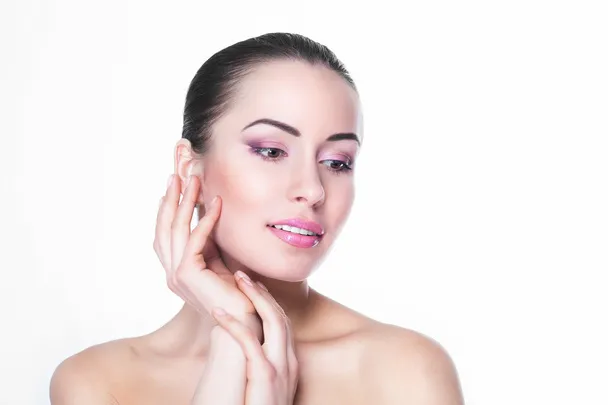Our Guide to Treating and Preventing Razor Burn and Ingrown Hairs
Dealing with razor burn and ingrown hairs can be frustrating and uncomfortable, but with the right approach, you can effectively treat and prevent these common skincare issues. Whether you’re prone to razor burn or struggling with ingrown hairs, our comprehensive guide will help you navigate the steps to smooth, irritation-free skin.
Understanding Razor Burn:
Razor burn, a common post-shaving annoyance, emerges as a result of skin irritation triggered by the shaving process. This irritation can manifest in various forms, such as redness, inflammation, and discomfort, resembling a rash-like appearance on the skin’s surface. Individuals experiencing razor burn often report sensations of burning or stinging in the affected areas, further adding to the discomfort. Several factors contribute to the development of razor burn, with friction from the razor blade being a primary culprit. Improper shaving techniques, such as using a dull blade, applying too much pressure, or shaving against the direction of hair growth, can exacerbate friction and increase the likelihood of razor burn. Additionally, sensitivity to shaving products, such as shaving creams, gels, or aftershaves, can also play a role in triggering razor burn reactions. The combination of these factors can leave individuals with tender, irritated skin post-shave, making razor burn a common complaint among those who regularly engage in shaving routines.
Treating Razor Burn:
Cool Compress: Applying a cool compress to the affected area is an effective way to alleviate the discomfort caused by razor burn. The cool temperature helps to constrict blood vessels, reducing inflammation and soothing irritation. To create a cool compress, soak a clean washcloth in cold water or place a chilled gel pack in a cloth before applying it to the skin. Gently press the compress onto the affected area for several minutes, allowing the coolness to penetrate the skin and provide relief from discomfort. Repeat this process as needed to soothe razor burn and promote healing.
Aloe Vera Gel: Aloe vera gel is renowned for its soothing and moisturizing properties, making it an ideal remedy for razor burn. Rich in antioxidants and anti-inflammatory compounds, aloe vera helps to calm irritated skin, reduce redness, and promote healing. To use aloe vera gel for razor burn relief, simply apply a thin layer of pure aloe vera gel to the affected area after shaving. Allow the gel to absorb into the skin, providing instant relief from irritation and discomfort. For best results, choose aloe vera gel that is free from added fragrances or alcohol, as these ingredients may further irritate sensitive skin.
Hydrocortisone Cream: Over-the-counter hydrocortisone cream is a widely available topical treatment for razor burn that can help reduce inflammation and alleviate itching. Hydrocortisone works by suppressing the body’s inflammatory response, providing rapid relief from razor burn symptoms. When using hydrocortisone cream, it’s essential to follow the product label’s instructions carefully. Apply a small amount of cream to the affected area, gently massaging it into the skin until fully absorbed. Avoid using hydrocortisone cream on broken or irritated skin, and discontinue use if any adverse reactions occur. With regular application, hydrocortisone cream can effectively soothe razor burn and restore comfort to the skin.
Preventing Razor Burn:
Understanding Ingrown Hairs:
Ingrown hairs are a common skin condition that occurs when a hair curls back or grows sideways into the skin instead of growing out of the hair follicle as it should. This abnormal growth pattern can lead to various symptoms, including inflammation, redness, and the formation of small, painful bumps on the skin’s surface. These bumps, known as papules or pustules, may resemble acne or razor bumps and can be tender to the touch. Ingrown hairs can occur in any area where hair grows, but they are most commonly found in areas that are frequently shaved, such as the face, neck, armpits, legs, and bikini area.
Several factors contribute to the development of ingrown hairs, with improper shaving techniques being a primary culprit. Shaving against the direction of hair growth, using dull razor blades, or applying too much pressure while shaving can increase the likelihood of hairs becoming trapped beneath the skin’s surface. Additionally, wearing tight clothing or engaging in activities that cause friction against the skin, such as cycling or wearing tight-fitting athletic gear, can also contribute to the formation of ingrown hairs.
When an ingrown hair becomes trapped beneath the skin’s surface, it can lead to irritation and inflammation, resulting in the characteristic symptoms associated with ingrown hairs. In some cases, the trapped hair may become infected, leading to the formation of pustules or abscesses. To prevent ingrown hairs, it’s essential to practice proper shaving techniques, wear loose-fitting clothing, and exfoliate regularly to remove dead skin cells and prevent hairs from becoming trapped beneath the surface. If ingrown hairs do occur, gentle exfoliation and topical treatments can help to alleviate symptoms and promote healing.
Treating Ingrown Hairs:
Preventing Ingrown Hairs:
By following these tips for treating and preventing razor burn and ingrown hairs, you can achieve smoother, healthier-looking skin and enjoy a more comfortable shaving experience. Remember to be gentle with your skin and give it the care it deserves to maintain its health and vitality.










